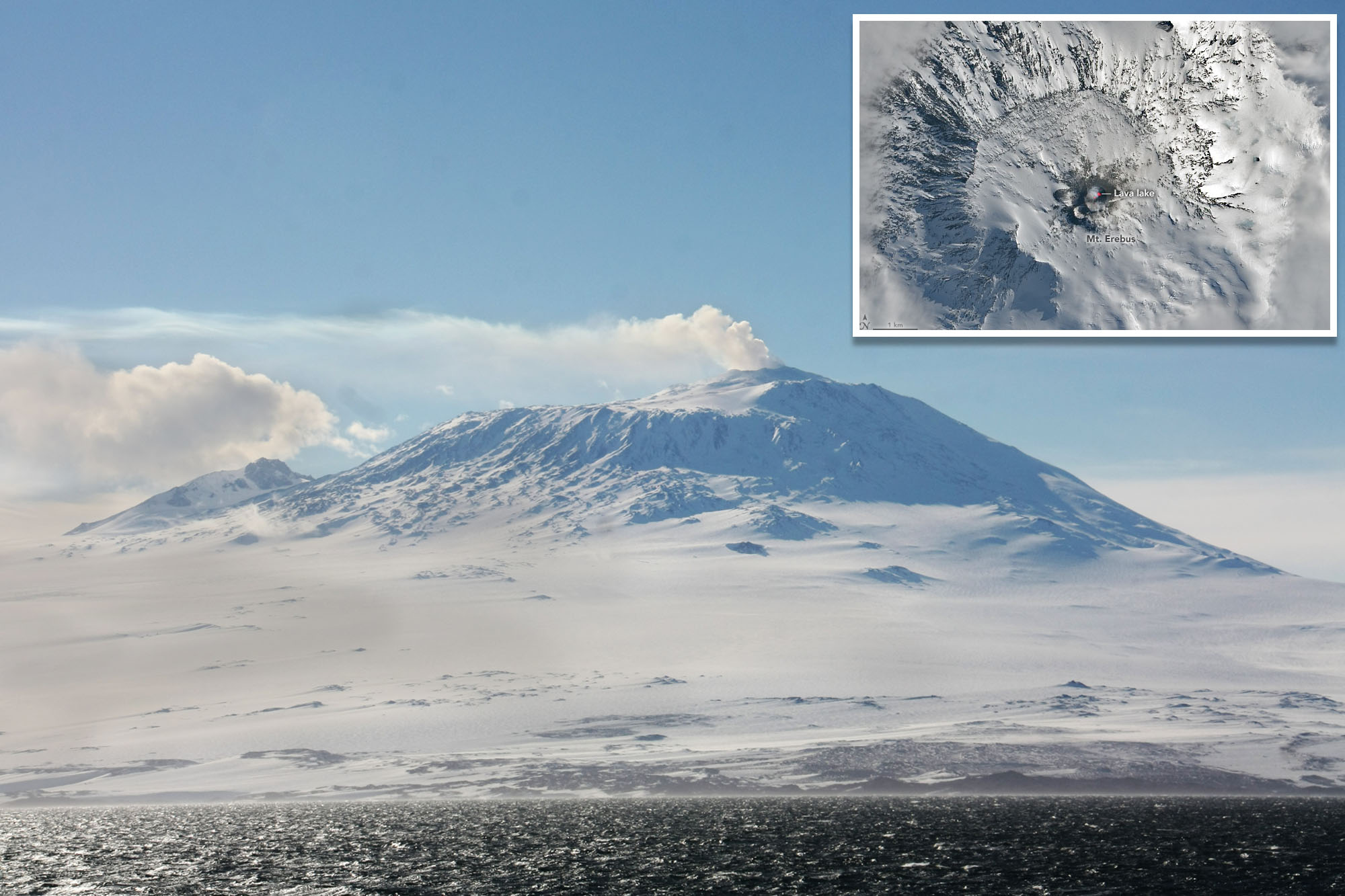
That’s so metal.
An active volcanic mountain in the frigid Antarctic is blowing a small fortune’s worth of gold into the atmosphere every day, IFL Science reported — now, all you have to do is get there.
Mount Erebus, which joins Deception Island as the only two of 138 active volcanoes in Antarctica, is known for expelling pockets of gas containing roughly 80 grams of crystallized gold daily, worth about $6,000, according to experts.
The presence of the pricey dust has been recorded as far as 621 miles away from the planet’s southernmost lava-spewer, which tops out at 12,448 feet.
But, the precious metal is just one of many things spewing out of Erebus, according to the National Aeronautics and Space Administration Earth Observatory.
“It regularly emits plumes of gas and steam, and occasionally spits out rock (bombs),” according to NASA.
The gaseous and solid contents are projected through strombolian eruptions — a moderate rate of spewing intensity that sadly has zero to do with a certain doughy Italian food.
“Erebus…has been continuously erupting since at least 1972,” Conor Bacon of Lamont-Doherty Earth Observatory at Columbia University in New York, told Live Science.
He added that Erebus is also known for containing a “lava lake” at one of its summit craters — brought on by molten material at its surface level.
“These are actually quite rare, as it requires some very specific conditions to be met to ensure the surface never freezes over.”
However, there is still much to be understood about the volcanic format in Antarctica — and what event, cataclysmic or otherwise, might activate the other hundred-plus volcanoes sitting chilly.
Geographic isolation is a key factor in a lack of consistent research.
Both Erebus and Deception Island only “have a small number of permanent monitoring instruments” that “primarily consist of seismometers to detect seismic activity associated with volcanic unrest,” per Bacon.
“From time to time, researchers will deploy more extensive networks of instruments to conduct specific studies, but this naturally comes with a huge number of logistical challenges when compared to the many, far more accessible, volcanoes elsewhere in the world.”














